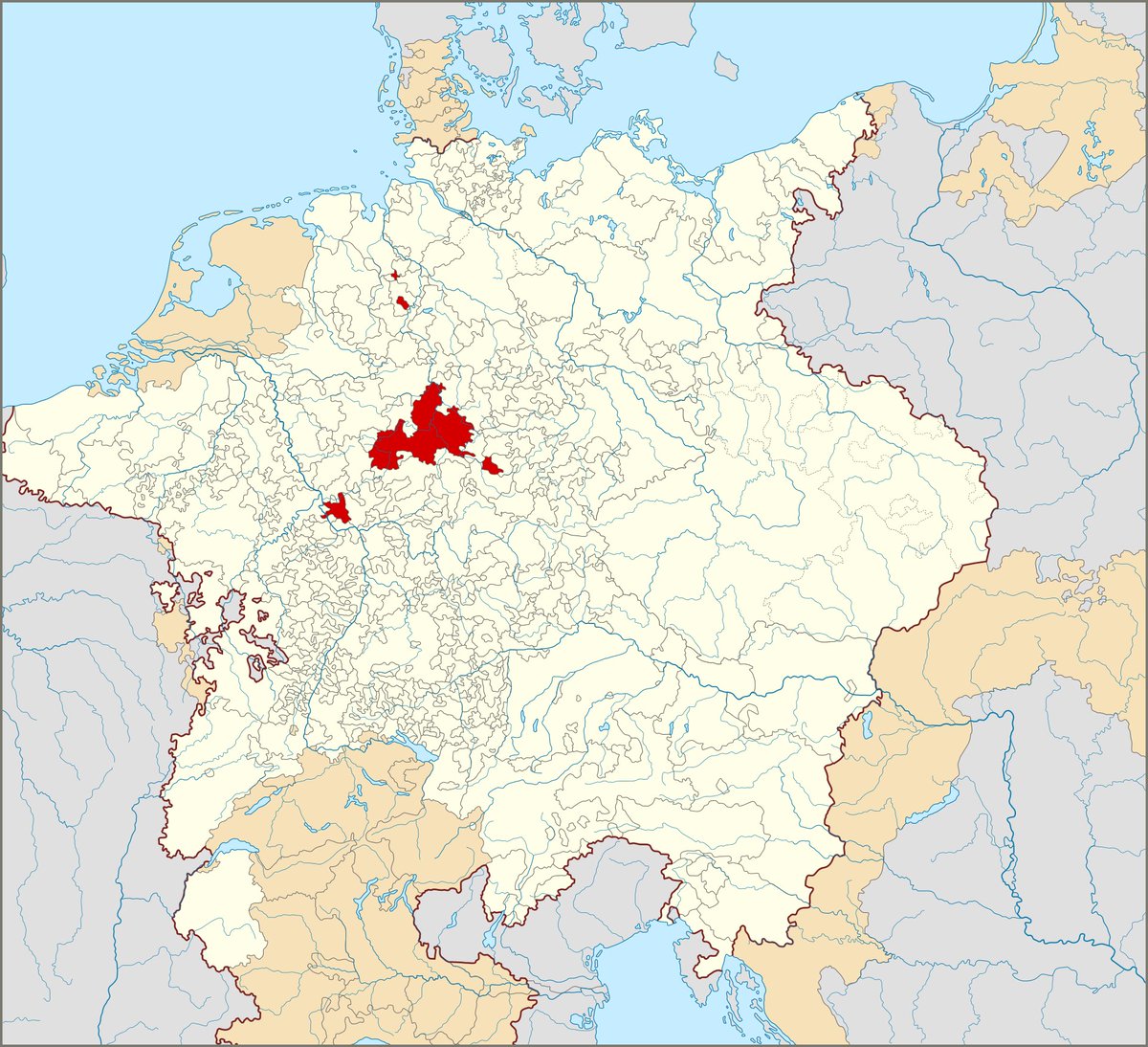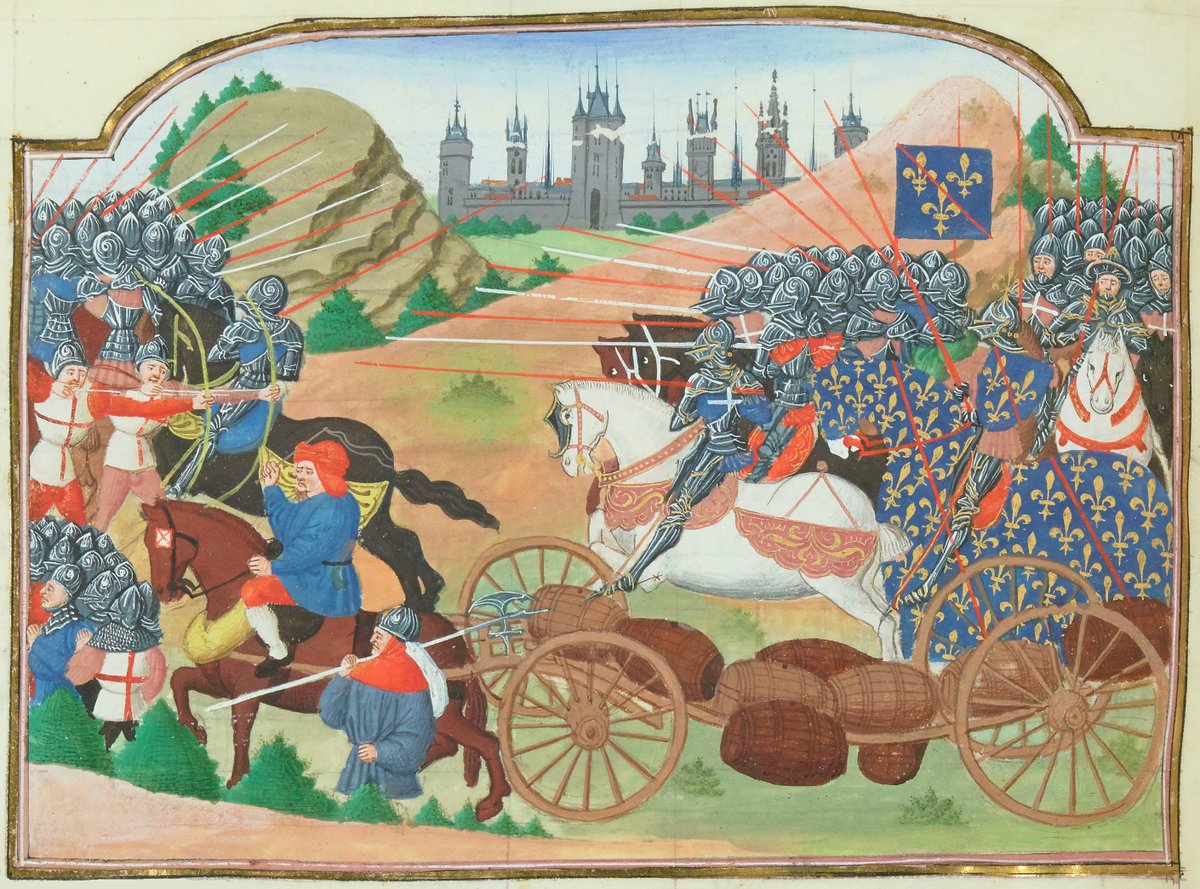
The Hessians! The largest contingent of the German mercenaries who fought for the British in the American Revolutionary War! Long vilified by the Americans, the Hessians were highly disciplined and skilled elite troops. How did such a small German state provide so many soldiers? 

The Hessians came from the small Landgraviate of Hesse-Kassel in the Holy Roman Empire, a small Calvinist state that has suffered heavily in Thirty Years' War where it had fought on the Protestant side. War and extreme militarism would mark the Hessians since then. 



During the 18th century it was common for many smaller German states to send their soldiers to foreign powers for money. This was a profitable source of income and as a result many of these states were highly militarized. Hesse-Kassel was the most militarized of them all! 

In fact the Landgraviate of Hesse-Kassel took this to a whole new level, especially after Frederick II von Hessen-Kassel became the Landgrave in 1760. His land became described as "the most militarized society in all Germany" even more so than Prussia led by his namesake. 



Frederick II had 12000 field army plus another 12000 serving in garrisons. The soldier to civilian ratio was 1:15 which was astonishingly high even compared to the proverbially militaristic Prussia where the ratio was 1:30. Every 4th household had someone serving in the military! 

Furthermore compared to Prussia where there were many foreigners serving in the army, in Hesse-Kassel it was almost exclusively local men, the "Landkinder", who served as soldiers. Strict discipline and harsh training were the norm and the Hessians earned respect all over Europe! 

This militarized nature of Hesse-Kassel astonished the foreign travelers. When visiting these lands contemporary Swiss historian Johannes von Müller simply remarked, "before I came to Hesse I hardly knew what a military nation was." 

Before the American Revolution the Hessians had served in major conflicts of the 18th century with great distinction. There were Hessians fighting in War of Spanish Succession, The Great Northern War, Jacobite Rebellion, War of Austrian Succession and Seven Years' War! 

The British therefore knew where to look for troops when they needed to combat the rebels in America. On 31 January 1776 they struck a very expensive deal with Frederick II who promised them 12000 Hessians soldiers with additional 1000 replacements every year! 

19000 Hessians from Hesse-Kassel would serve in the American Revolutionary War! They were not the only German mercenaries in the British army as 6 other German states provided mercenaries as well, including Hesse-Hanau (secundogeniture of Hesse-Kassel) who sent 2500. 



Altogether 30000 German mercenaries served in the British army in America, the majority of them being Hessians. The others were recruited by the states of Anhalt-Zerbst, Anspach-Beyreuth, Brunswick, Hannover and Waldeck! 

Frederick had some difficulties recruiting as many deserted not wanting to cross the ocean. However there were also many volunteers who either simply wanted to fight or were lured by the riches of America where they could settle after the war. Some took their families with them. 

The big number of soldiers Frederick was obliged to send proved difficult to gather even for militarized Hesse-Kassel. While Frederick expected this would solve the problem of rural overpopulation, sending 12% of able-bodied men abroad was maybe not the best idea either. 

To meet the agreed number of soldiers Frederick had to resort to recruiting soldiers from neighboring states and lowering the requirements, recruiting a number of "undesirable social elements" that the German states were willing to get rid off by sending them over to America. 

Ignoring these few exceptions recruited out of necessity, the Hessians were generally highly disciplined and very valuable for the British. Right away they proved their worth at the Battle of Long Island on 27 August 1776 where they were decisive for the British victory! 

The elite troops of the Hessians were the Jaeger Corps who served as a mobile light infantry. They also served as garrison troops. A detachment of Hessians was defeated by George Washington's troops at the Battle of Trenton in 1776 after the famous crossing of the Delaware river. 







The Hessians served in Nova Scotia for five years. A large number of them also served in the south in Georgia and the Carolinas which was against the wishes of Frederick that they should be deployed only in the northern colonies. Only around 500 of Hessians died in battle. 



The Hessians were great soldiers and some of the best troops fighting in the war. Their advantage was in their superior training and discipline as well as being very homogeneous as most of them were fellow Landkinder from this small land of Hesse-Kassel. 

However fighting in the Americas was different than in Europe and presented some difficulties for the Hessians. Many also died from disease which was the most overwhelming cause of dead of 5000 Hessians who died while serving in America. 



American revolutionaries vilified the Hessians. It was very useful for their propaganda to stress that there were foreign German mercenaries serving in the British army and to depict them as barbaric savages. This depiction of them became rooted in American memory and culture. 

Also back home in Europe many enlightenment thinkers condemned Frederick for "selling his subjects to the English as one sells cattle to be dragged to the slaughter" and were supporting the American cause. Frederick's reputation as an enlightened ruler plummeted because of this. 

Americans tried to sway the Hessians to desert and join their cause. Many Hessians did actually desert as war went on and settled in America but it was not because of any sympathy for American ideology but because of promises of land and the great riches of the new world. 

As evidenced from their writings even privately the Hessians sympathized with the British cause and not with Americans. For example they could not get behind the anti-nobility sentiment of the colonials who were mostly wealthier than the average nobleman from their homeland. 

The Hessians also didn't like the treatment of black slaves by the Americans and enlisted runaway slaves in their army, mostly as drummers and musicians. At least 131 black men joined the Hessians, 94 of them as drummers. They were given German first names! 





The Hessians fought for the British until the bitter end and participated in the Siege of Yorktown which is sometimes even referred to as "the German battle". After the war was over many Hessians were among the 5000 German soldiers who decided to stay in America. Others returned. 

• • •
Missing some Tweet in this thread? You can try to
force a refresh
























